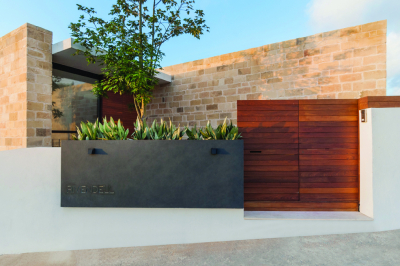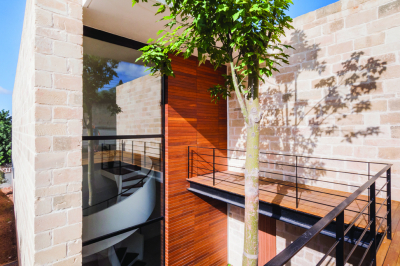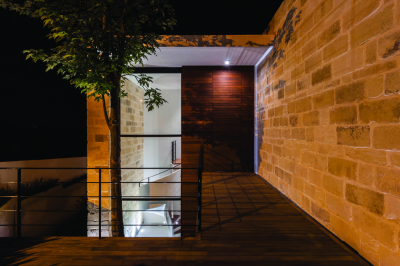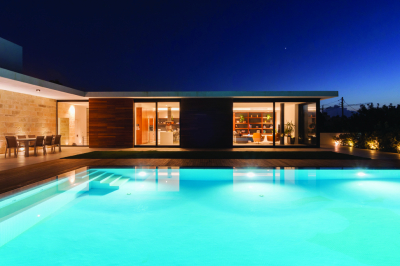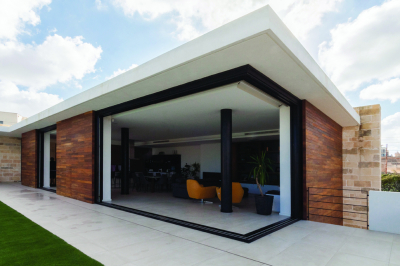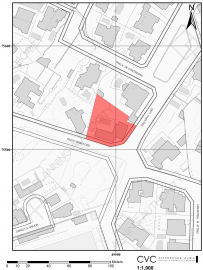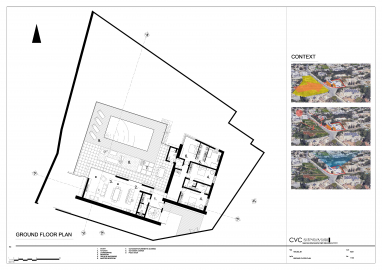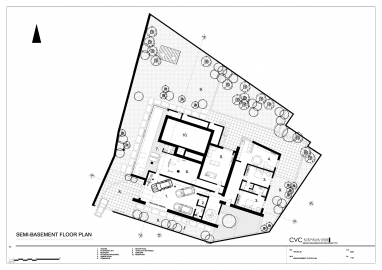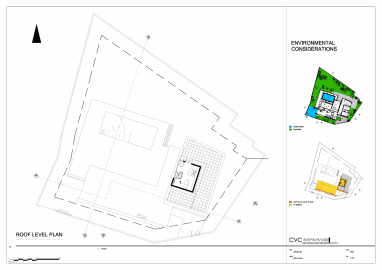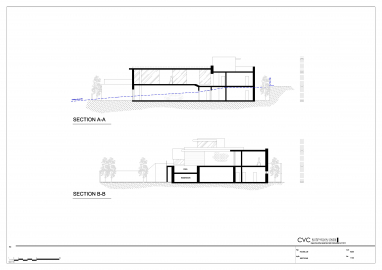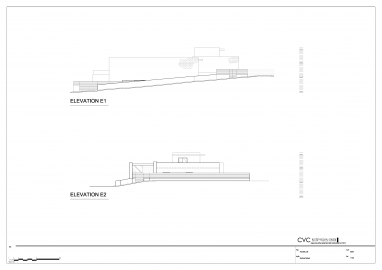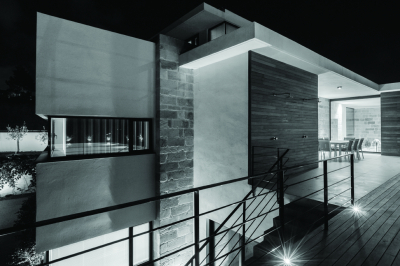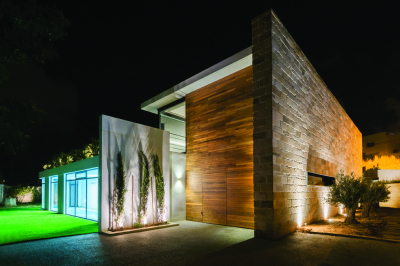HOUSE_59
HOUSE_59 seeks to establish a dialogue between the natural materials employed and its surroundings. Furthermore, the powerful identity of the different planes creates a strong narrative on approaching the house from the road, thus creating a striking and bold building that however sits comfortably within its context.
HOUSE_59 respects its surroundings by fusing traditional materials with contemporary lines. Long, solid walls of recycled natural stone create a series of vertical planes whilst the cantilevering roof forms a crisp, contrasting horizontal plane, together giving depth and texture to the form of the building. Timber cladding conceals the entrances to the house whilst ample endemic vegetation complete the palette used throughout the project. On the inside, large floor-to-ceiling glazing overlooks the pool area, which was raised to exploit the long distance views. The living spaces are contained behind these glass doors that open and hide behind timber screens thus completely merging the internal and external spaces. The sleeping areas lie within a separate and more private wing of the house. The lower level is dedicated to a gym, indoor pool and further recreational spaces.
The house is located within a villa area that was traditionally characterized by its rural nature and low density constructions. Winding rubble walls retaining the soil in fields, the use of traditional stone in the elegant villas together with significant amounts of vegetation create a palette of natural tones consistent with the local Mediterranean landscape.
The sloping site is zoned for single storey construction above street level whilst a large piece of land to the South of the site is zoned for two storey construction thus creating the potential for the site to be overlooked. For this reason long, solid walls were designed to shield the occupants of HOUSE_59 from the prying eyes of this future development nearby. The idea to create an introverted house is juxtaposed with the bright and open interiors, where large floor-to-ceiling glazing overlooks the pool area, which was raised to exploit the long distance views. The open-plan living spaces are contained behind these glass doors that open and disappear behind timber screens thus completely merging the internal and external spaces.
Apart from seeking a strong relationship with its surrounding, the house was designed to be energy efficient and sustainable in its construction. The orientation of the house is such that the long solid stone walls of recycled stone are facing south thus helping to control thermal gains. Roof insulation, cavity wall construction and double glazed apertures in thermal-break aluminium further contribute to the passive design of the building. Two sizeable water cisterns were built to collect rain water from the roofs and terraces. The water is used to maintain the ample gardens. Over forty photo-voltaic panels are located on the roofs generating a substantial amount of energy. These are virtually invisible thanks to a rigorous study which was implemented at design stage in order to incorporate these panels without negatively impacting the design of the house.
The structural design of the building was relatively traditional, employing a mixture of load bearing walls, reinforced concrete columns and reinforced concrete beams and ceilings. This ensured that construction costs and future maintenance and serviceability costs for the building were contained.

